Kayanza’s “Musumba Hotel” hosted on 3 August the signing of a “road map” to 2020 elections, which is not unanimous.
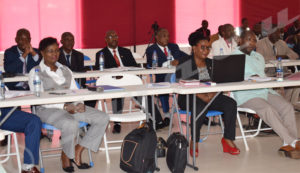
Political leaders present in Kayanza
First, an observation: Do political parties that attended the meeting in Kayanza really dominate the Burundian political scene? Of course, 22 out of 32 political forces authorized in Burundi responded to the government invitation. Apparently, it’s full participation.
However, any political observer is wondering about the impact, the importance and the representativeness of all these political formations. In other words, how much do they dominate the Burundi political scene?
As a reminder, during the presidential elections of 2015, UPRONA party had 2.4% of the votes obtained, FNL, the wing led by Jacques Bigirimana 1.01%, COPA political coalition led by Jean de Dieu Mutabazi 0.16%. Apart from the ruling CNDD-FDD, other political parties that participated in Kayanza meeting have subtle influence on the political scale. Those who aimed at the “high number” of political parties that were present for the signing of this roadmap did so for political reasons
Collection of some declarations
In Kayanza, participants tipped the scales in favor of one side only. Better, all or almost all participants spoke the same language. In Kayanza “they all speak the same language as CNDD-FDD,” said a politician with humor. It is true that unanimity was prevailing. From the secretary general of UPRONA party, Olivier Nkurunziza, to the chairman FNL party, Jacques Bigirimana, through politicians like Alice Nzomukunda, Jean de Dieu Mutabazi or Kefa Nibizi …. No significant divergence on the big issues was raised.
But in Kayanza, a tiny voice rose to deny, denounce and say no. A certain Phenias Nigaba, spokesperson for Sahwanya FRODEBU.
He represented all the opposition. He said that the roadmap document was secretly prepared in advance, “We do not know by whom. And political actors have been excluded, how do you want my party to endorse that? This dissonant voice also opted not to sign the roadmap, describing the session of Musumba of non-consensual.
By refusing to sign the “road map”, FRODEBU joined senior internal political opponents who had refused to attend Kayanza meeting. MRC party and Amizero y’Abarundi coalition said in a press release “a forcing aimed at undermining the external inter-Burundian dialogue led by the facilitation and mediation of the sub-region.” For them, it is out of the question to contribute to disruption of the dialogue process under the auspice of Mkapa.
In any case, Sahwanya FRODEBU party has the merit of having taken part in the session to protest its results on spot. Phenias Nigaba said his party hated the practice of the empty chair and preferred dialogue.
The master of ceremonies, the Ministry of the Interior, did not invite the opposition in exile. The opposite would have surprised. CNARED has always been qualified by the government of being a Belgian organization not recognized by the government.
At the end, we have a “road map” drawn up by the ruling party in partnership with “his” opposition. The result of these elections is already announced with this document already decried, not consensual which is however supposed to govern the big appointment of 2020 elections.
Contacted, Former President Sylvestre Ntibantunganya is pessimistic: “The history of Burundi taught me that when you want to solve a crisis, it is absolutely necessary to make sure that all the protagonists are associated.”
According to him, it is therefore necessary to engage opinions that weigh in for a credible roadmap. “Otherwise the risk of failure is enormous,” he says.
Agathon Rwasa, leader of the Coalition of Independents “Amizero y’Abarundi” is disappointed. “The priority was not a “road map”. There were other questions to be tackled in particular the opening of the political space, the “Constitution which favors some and discriminates others, etc.”
What room for manoeuvre by facilitation?
In recent weeks, Tanzanian facilitators have been busy calling for a next round of talks. There is a problem because the road map to 2020 elections was on the agenda of the facilitator Benjamin Mkapa. Bujumbura seems to have got ahead of Arusha so that during the resumption of dialogue “the road map” would have been discussed.
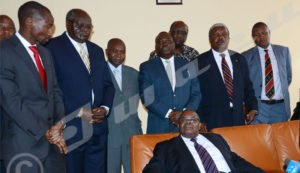
Amizero y’Abarundi coalition boycotted Kayanza meeting.
Kayanza is therefore a “good tackle” on the facilitation because how can Mkapa include an item already discussed by 20 political parties including the opposition without creating problems with CNDD-FDD? For Bujumbura, “the road map” was already tackled in the meeting of Kayanza and will not be repeated in Arusha.
“Why going to search for a roadmap outside the country when we can make it ourselves here?” This was heard in Kayanza. They referred to the peace talks led by Mkapa, the facilitator.
The general secretary of CNDD-FDD has also said that topics already discussed inside the country will no longer be repeated outside. “Tuna songa mbele.” (We are moving forward) proudly said members of CNDD-FDD.
For the ruling party, the road map to 2020 elections has been given. The question was “discussed”, the matter is closed.
At this stage, what can the opposition, the real opposition, do to make its voice heard? Taking the step and following the road map and the pace imposed by the power in place? Still playing the empty chair as in 2010? The internal opposition continues to denounce acts of repeated violence suffered by its members.
The opposition in exile has just been spending months to manage internal issues and is currently trying to reunite and hope to get ready for 2020 elections.
Written by Agnès Ndirubusa and translated by
Lorraine Josiane Manishatse and Bella Lucia Nininahazwe

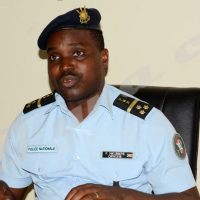
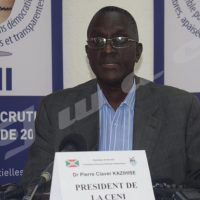
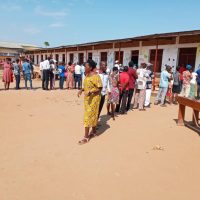
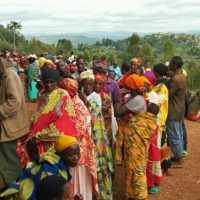
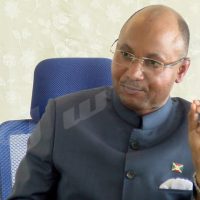













 IWACU Open Data
IWACU Open Data

